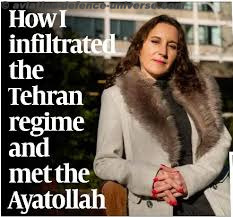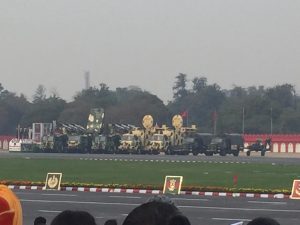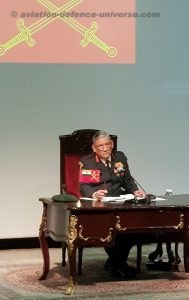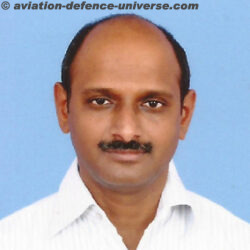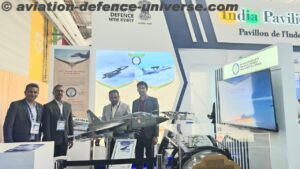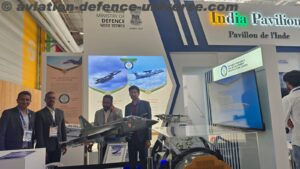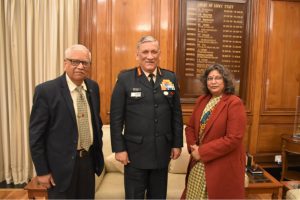
“We are looking for time bound promotion to the rank of Naik and Havildar after completion of 8 and 16 years of service across all arms and services. Due to the time bound promotion upto Havildar without restriction on the number of vacancies, about 90% of the personnel would be promoted upto Naik and about 85% of the personnel would get promoted to Havildar,” said Indian Army Chief General Bipin Rawat, UYSM, AVSM, YSM, SM in an exclusive interview to Aviation & Defence Universe (ADU),on the occasion of Army Day, 2019.
ADU. What are the major issues of preparedness that concern you as the Chief of the Indian Army and how do you plan to encounter them?
COAS. Indian Army’s modernisation strategy covers the entire spectrum of conflict and is structured along three cardinal approaches. Firstly, to address conventional warfare capability, we are investing into futuristic weapon systems like combat vehicles, artillery guns, air defence platforms, army aviation and other assets. Modernisation of Infantry weapons is high on our priority. Modernisation roadmap of Infantry lays emphasis on the domains of lethality and survivability, to empower our soldiers engaged in the proxy war as well as insurgency.
The second category is the support systems required to augment main platforms. Our road map aims at harnessing technology to build capabilities in the domain of electronic warfare, intelligence, surveillance and reconnaissance. Third category would be the requirements for the ongoing operations in the constantly evolving operational environment.
These plans are aligned with the ‘Make in India’ initiative to intensify impetus for indigenisation, as part of Indian Army’s commitment to nation building. The Defence Ministry has further strengthened the Armed Forces by according enhanced financial powers to meet instant requirements and is making endeavours for allocating requisite financial outlay. A large number of schemes are at advanced stages of procurement which once approved, would significantly boost the efforts of the Indian Army to transform into a more potent and adaptive force.
ADU. What is the operational necessity for carrying out restructuring in Indian Army?
COAS. The Committee of Experts (CoE) headed by Lt Gen D B Shekatkar (Retd) was tasked by the MoD to look into certain aspects to enhance combat capability and rebalance defence expenditure which is at various stages of implementation. In addition to the recommendations of the CoE, we are in process of examining multiple optimisation avenues for rightsizing of the Indian Army. While manpower requirements along our borders and insurgency areas are crucial, there is a scope for determining redundant functions at all levels and manpower in non-core areas. The recommendations for optimisation, if deemed operationally viable, would be implemented. This would also lead to savings in the revenue budget.
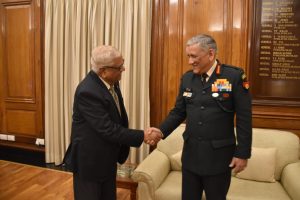
ADU. Out of the four studies being conducted by Army one is on JCO and OR engagement. What reforms are expected for the promotions and welfares of the JCOs and OR through this study? Also how do you plan to reorganize the officer cadre?
COAS. We through JCO and OR engagement study are trying to achieve a fair balance between functional requirements & individual aspirations. Our endeavour is to provide faster timelines for promotion and enhanced promotability that would resolve the issue of stagnation, leading to increased satisfaction and motivation levels. Due to increase in the length of service and higher last pay drawn, the life time earnings would also increase significantly.
We are looking for time bound promotion to the rank of Naik and Havildar after completion of 8 and 16 years of service across all arms and services. Due to the time bound promotion upto Havildar without restriction on the number of vacancies, about 90% of the personnel would be promoted upto Naik and about 85% of the personnel would get promoted to Havildar.
Through the officer cadre review, we aim at reducing the base of the present pyramidal structure of the Army which will in turn lead to better cadre mobility and satisfaction levels. It will also improve promotion prospects and will result in gainful employment of all officers.
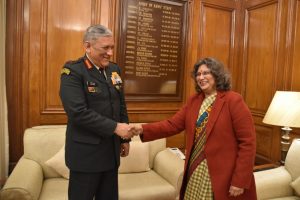
ADU. How effective is our border management in J&K?
COAS. In J&K robust counter infiltration deployment has been ensured on the Line of Control. Terrorists have found it difficult to infiltrate because of our dynamic response against any attempt at infiltration. Terrorists have attempted to infiltrate through other areas like the IB sector of J&K. We are taking measures along with other security forces and agencies to deal with these situations of our borders.
ADU. How is the Indian Army soldiers equipped as compared to their counterparts in other advanced countries? What is the planned roadmap for the same?
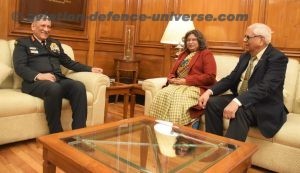
COAS. The Indian soldier is being equipped at par with soldiers of advanced countries, for meeting operational challenges in our context. The focus is to empower the soldier for effective domination of the operational environment both in conventional and sub-conventional scenarios. Procurement of modern assault rifles, CQB carbines, LMGs and sniper rifle are underway. We are equipping soldiers with the state of art bullet proof jackets and ballistic helmets for protection and survivability. The delivery of recently contracted ballistic helmets has commenced and the delivery of BPJs is to commence shortly. The night fighting capability of soldier is getting a major boost with induction of image intensifier and thermal imaging based night sights and equipment for all types of weapons.














